You know how wonderful it is that our products have crisp, high resolution, large photos? You can zoom in and see every single aspect and component on the PCB. Well, that's thanks to SparkFun's meticulous photographer, Juan. He came to me a few weeks ago with a problem he was facing in one of his other interests: disc golf.
Juan showing off how it's done!
For those unfamiliar with disc golf, it's a game that is played pretty much the same as it sounds. It follows similar rules as golf...there are "holes," which are baskets, and instead of using a golf club and balls, one uses a frisbee to throw at the target. Similar to golf, it's played over a vast area of land between brush and trees, and there are different discs that fly better for long distance vs. short distance.
It's clear, once you understand the game, that it could be problematic to lose a disc if you had a bad throw, and it would be quite time consuming to find it if it flew into a swamp or thick brush. Juan and I wanted to build a better method for locating a disc when a throw goes awry.
I realized that this problem extends to any object that might be subjected to getting lost, and there are many different technologies that could be used to locate something. So, we decided we would try out a plethora of different technologies to find the best one for the specific purpose of finding a lost disc. That means it has to be as lightweight and inconspicuous as possible, as a heavy build would completely mess up the way a disc flies, and thus, your accuracy.
Different disc types for different distances
First try with the obvious choice for positioning: GPS
My first thought was if you need to find the position of an object, the best method to do that would be with GPS. The SparkFun XA1110 Qwiic GPS Breakout was the smallest module I could find that would be able to do basic positioning. However, the footprint and weight start to add up when you consider that in conjunction, the module requires both a microcontroller and power. But, it's easy to build an interface with Blynk to track the module's location from an app or the web.
Juan and I visited our local disc golf course and tested out just how heavy and cumbersome it would be to attach a microcontroller and module on the underside of disc. Some immediate issues came up: The weight definitely affects the throw, and the the module would need an extra casing to protect from impact damage and environmental damage (possibly water, dust, etc.)
Will the disc make it into the target? Probably not, as I threw it
So, off the bat, it seems that while GPS has the capabilites to track a disc, the footprint is too large to make much sense. I suppose that means we should look at other means of technology to find a better method...perhaps an RFID sticker that could be attached to the disc to ensure it doesn't affect the game? Or maybe an Airtag that's lightweight and can be integrated into the Apple ecosystem? We'll try those out next time, so stay tuned, and if you have ideas, feel free to help us save some experimentation time in the comments!
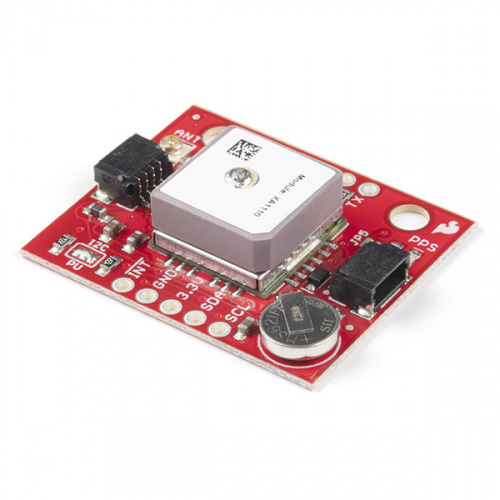
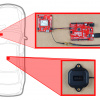
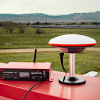

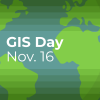
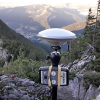
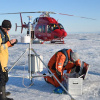






You could try using UHF RFID. It's passive and a sticker would be affixed to the bottom of the disc. The max range is 23feet so you need to be reasonably close to the lost disc while searching. This is an example of a UHF reader: https://bityl.co/8QIi
Try an Apple AirTag. With the newer iphones it has directional tracking. They are half the price of a gps module.
Their range is 10m / 33ft max from what I've read.
I imagine you'd keep an eye on the frisbee and be able to get close enough even if it's not known exactly where it is.
Try an off-the-shelf key finder. They beep loudly when triggered wirelessly via remote control. These are available from your favorite online retailer for about $20 without any extra tinkering. Replace the battery with a tiny one to reduce weight.
It's not in the spirit of putting a "precise" locator on it - but a piezo beeper and coin cell might be a bit smaller, lighter and robust. Maybe have an 8 pin uC and gyro/accelerometer to delay the start of beeping and make it intermittent - maybe a light as others suggested if it happens to ditch in water.
Small GPS chips might not have the accuracy needed - especially if you (and it) can't get a clear view of the sky.
Lilypad family:
LilyPad Accelerometer - ADXL335 https://www.sparkfun.com/products/9267
LilyTwinkle AtTiny85 - https://www.sparkfun.com/products/11364
LilyPad Buzzer - https://www.sparkfun.com/products/8463
LilyPad Pixel Board - https://www.sparkfun.com/products/13264
What about a video system that records flight path and can be used to lead to expected location of disc. No modification/alteration to the disc; doesn't account for bouncing off trees.
Bright LED, ambient light sensor, coin cell and tiny micro. Flash the LED when it gets dark out and come back at night.
Add a piezo beeper for when it's not visible as well. It could also act as a senor for 'landing' (Maybe). It might be better to use an accelerometer and gyro to detect the stopping of rotation. A soft landing might not shock the piezo enough.
https://www.sparkfun.com/products/10293